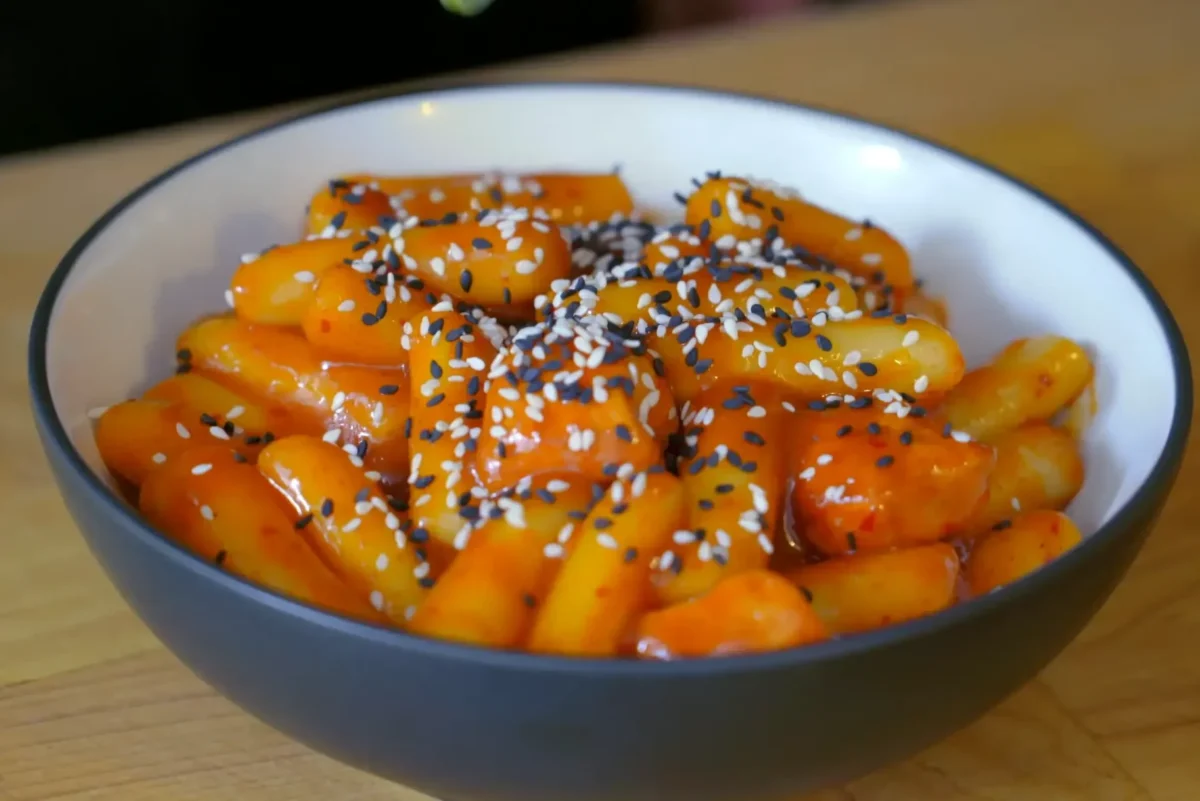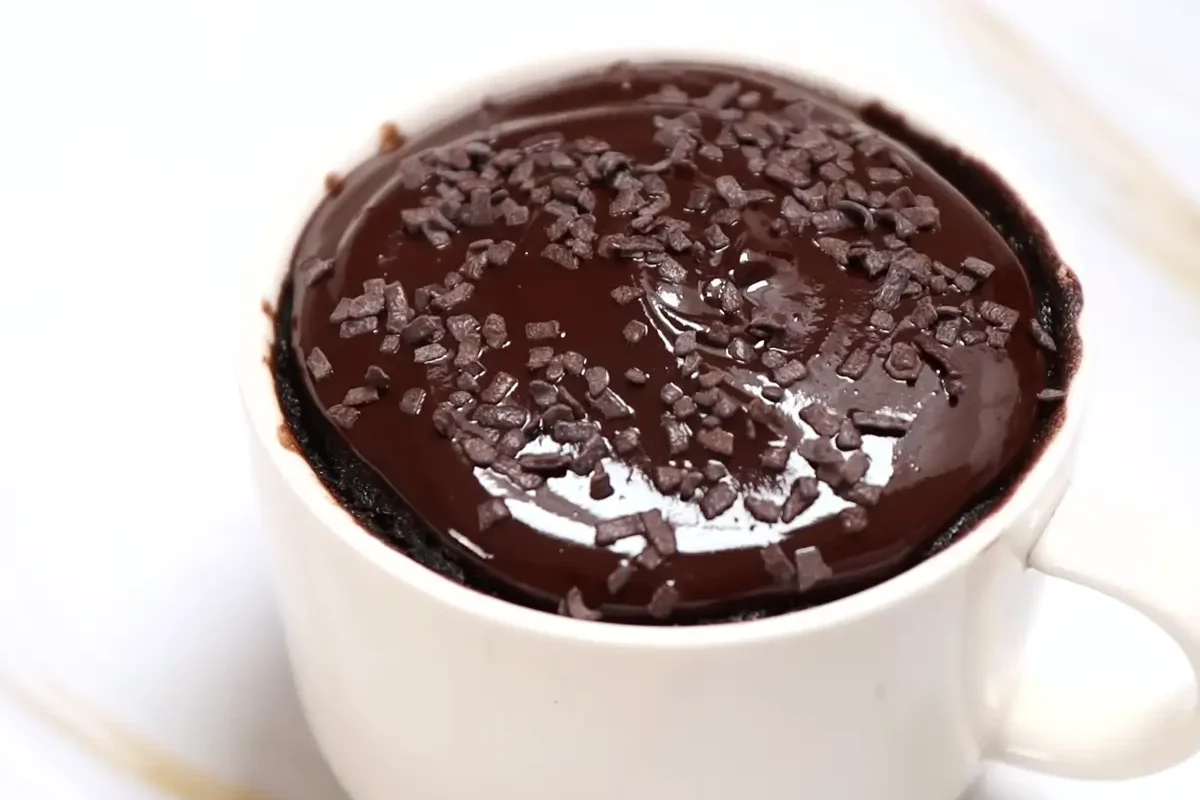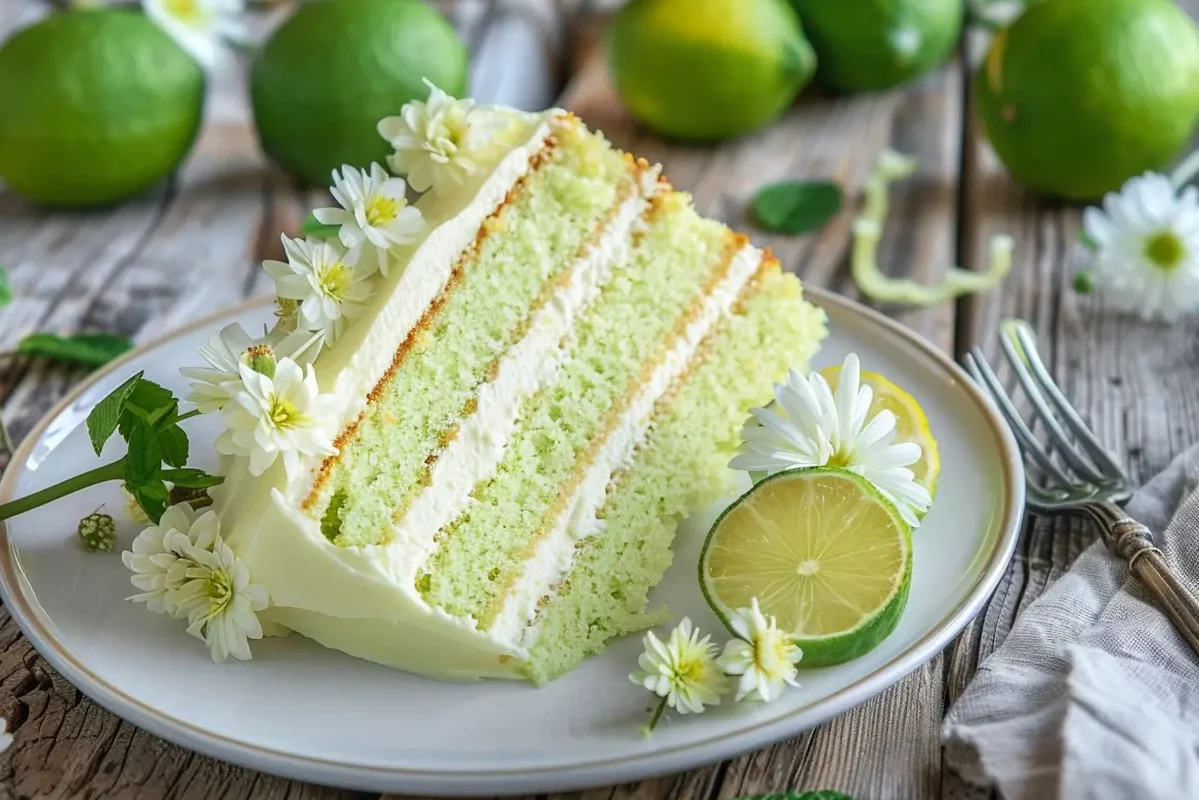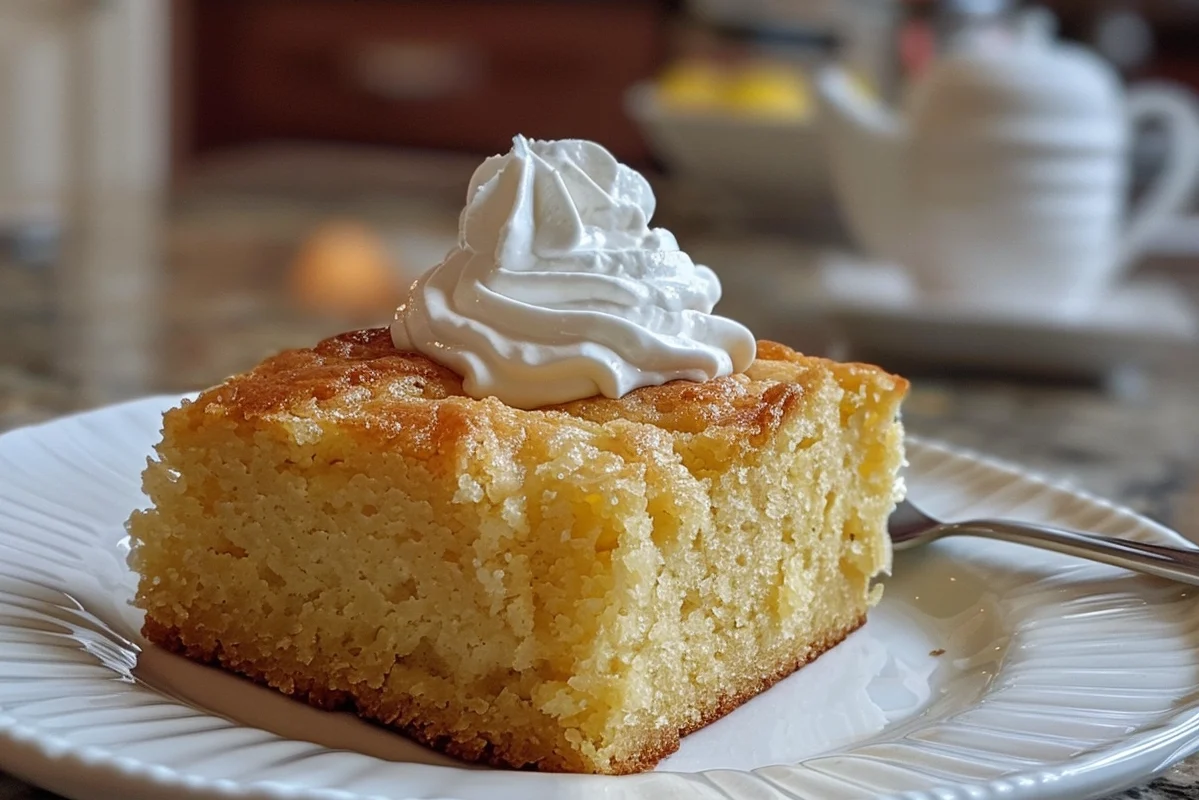As you explore tteok, you’ll find a wide variety of Korean rice cake recipe, each with its unique flavor and significance. From sweet songpyeon during Chuseok to savory tteokbokki, tteok showcases the diversity of Korean cuisine.
The preparation of tteok is an art, passed down through generations. It begins by selecting the finest rice, soaking it, grinding it into flour, and steaming it. This process enhances the rice’s sweetness and ensures the perfect chewy texture that tteok is known for. Artisans and home cooks flavor their creations with ingredients like sweet red beans, sesame seeds, spring onions, and gochujang paste, adding depth to the rice base.
Moreover, tteok isn’t just food; it’s a cultural symbol, deeply embedded in Korea’s social and ritual life. It is a dish of celebration, often gifted during weddings, birthdays, and New Year’s, symbolizing prosperity and a wish for good fortune. Eating tteok on New Year’s Day, for example, is believed to add a year to one’s life and bring good luck for the year ahead.
In contemporary kitchens, tteok has also found a new lease on life, incorporating modern, international ingredients that make it even more appealing to a global audience. Imagine a tteok salad with arugula, parmesan, and a balsamic reduction or tteok skewers grilled with Mediterranean spices. These innovations invite food enthusiasts everywhere to rethink traditional boundaries and explore new culinary landscapes.
Tteok represents the enduring appeal of Korean cuisine and offers a canvas for creative expression. It invites all, whether seasoned foodies or curious newcomers, to savor its charms and explore its endless possibilities, promising a rich and delicious journey through Korea’s culinary heritage.
Traditional Korean Rice Cake Recipe
Tteokguk (Korean Rice Cake Soup)
- Ingredients and Preparation: Tteokguk features thinly sliced tteok immersed in a rich, clear beef broth, often adorned with delicate strands of seaweed and sharp, vibrant scallions. This soup is not only a staple during the Lunar New Year but also serves as a soothing dish appreciated throughout the colder months or whenever comfort food is needed.
- Cultural Significance: The act of eating Tteokguk during the New Year is packed with symbolism; it is believed to ensure longevity and prosperity for the coming year. In Korea, one does not simply age another year on their birthday, but rather collectively with everyone else on New Year’s Day, making this dish a shared ritual of renewal and well-being.
Dukbokki (Spicy Korean Rice Cake Recipe)
- Ingredients: Dukbokki is a dynamic, visually striking dish known for its bold red coloration, thanks to the liberal use of gochujang (Korean chili paste). This spicy concoction typically includes chewy rice cakes, succulent fish cakes, and boiled eggs, all simmered together in a piquant and sweet sauce that tantalizes the palate.
- Variations: Recognizing that spice levels can vary from one diner to the next, Dukbokki is versatile enough to be toned down. Milder versions swap the fiery gochujang for a gentler soy sauce base, creating a dish that is just as satisfying without the heat. For those looking to explore the world of Dukbokki, these delicious and easy recipes offer a great starting point.
Both Tteokguk and Dukbokki showcase the rich tapestry of flavors and traditions that Korean rice cake recipe have to offer. Whether you’re seeking the comfort of a warm soup or the exhilarating kick of a spicy treat, these dishes provide a delicious insight into the heart of Korean culinary culture. Each recipe invites you to experience and celebrate the heritage and innovation that define Korean cooking.
Modern Twists on Classic Recipes
Vegan and Gluten-Free Options
- Tailoring Tteok Recipes: Tteok has been ingeniously adapted into vegan and gluten-free versions to accommodate various dietary preferences and restrictions while preserving the essential textures and flavors of Korean rice cake recipe. Kitchen innovators utilize alternative ingredients such as brown rice flour or job’s tears flour, not only meeting gluten-free requirements but also providing a delightful twist on the traditional glutinous rice base.
Fusion Dishes
- Culinary Integration: Tteok’s versatility lends itself well to fusion cuisine, allowing chefs to blend Korean culinary traditions with global flavors. This approach has led to creations like Italian-inspired tteok risotto or Mexican tteok with salsa and avocado.
- Exploring New Recipes: For those keen to explore more unique twists on traditional recipes, incorporating elements from familiar favorites can open up a world of flavors. If you’re curious about how to blend Korean culinary practices with international favorites, consider exploring this guide on making your Starbucks-inspired treats at home, where the principles of fusion cooking can inspire your next tteok dish.
These modern takes on classic tteok recipes demonstrate the adaptability and enduring appeal of Korean rice cakes. By embracing both traditional methods and innovative culinary techniques, tteok continues to evolve, offering delicious options for every palate and preference. Whether you’re a die-hard traditionalist or a culinary adventurer, these adaptations ensure that everyone can enjoy the unique pleasure of Korean rice cake recipe.
Cooking Tips for Perfect Korean Rice Cake Recipe
Achieving the perfect texture and flavor in Korean rice cakes, known as tteok, requires attention to detail during the preparation process. Here are some expert tips to help you master the art of cooking these delightful treats:
Soaking
- Why It’s Crucial: Soaking dried rice cakes is essential for softening them adequately before cooking, enabling them to absorb water and soak up the flavors of your dish.
- How to Do It: Place the dried rice cakes in cold water for at least 30 minutes, ideally up to two hours for best results. If you’re short on time, you can use warm water to speed up the process, but be careful not to soak them for too long to prevent them from becoming overly soft and losing their texture.
Cooking
- Achieving Perfect Tenderness: To cook rice cakes, simmer them in a pot of water or broth. The key is to maintain a gentle boil; too vigorous and the rice cakes might break apart. Cook them until they are just tender – this usually takes about 5 to 10 minutes depending on their thickness.
- Monitoring Consistency: Keep an eye on the texture. You want the rice cakes to be soft yet still chewy, a hallmark of their appeal. Overcooking can make them mushy, so once they reach the desired tenderness, remove them from the heat immediately.
Serving Suggestions
- Enhancing Flavor and Presentation: Garnishing is more than just decoration; it enhances both the flavor and the visual appeal of the dish.
- Sesame Seeds: Sprinkle toasted sesame seeds over the top before serving to add a nutty flavor and a delightful crunch.
- Green Onions: Fresh green onions provide a sharp contrast to the mild, starchy rice cakes. Chop them finely and sprinkle over the top for a burst of freshness.
- Additional Options: Consider adding strips of nori (seaweed) or a light drizzle of soy sauce for an extra layer of umami flavor.
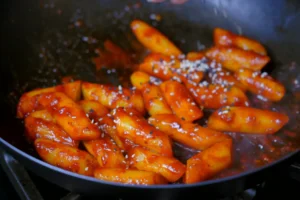
Health Benefits
Korean rice cakes, or tteok, are not just delicious; they also offer several health benefits that make them a worthy addition to any diet. Here’s a closer look at how these traditional treats can be part of a nutritious lifestyle:
Source of Energy
- Carbohydrate-Rich: Korean rice cakes are primarily made from glutinous rice flour, which is a good source of carbohydrates. These carbs provide a quick source of energy, making tteok an excellent snack before or after physical activities.
- Low in Fat: Unlike many snacks that are high in unhealthy fats, tteok is naturally low in fat. This makes them a healthier choice, particularly for those monitoring their fat intake for health reasons.
Nutritional Flexibility
- Adding Vegetables: One of the best ways to enhance the nutritional profile of tteok dishes is by adding a variety of vegetables. Vegetables not only add vitamins and minerals but also increase fiber content, which is essential for good digestive health.
- Incorporating Lean Meats: For those looking to boost protein intake, adding lean meats like chicken breast, turkey, or even seafood can turn a simple tteok dish into a complete meal. These proteins help build and repair tissues, making them essential for a balanced diet.
- Meal Versatility: Korean rice cakes can be adapted to fit any meal, from spicy tteokbokki as a main course to sweet tteok as a dessert. By adjusting the ingredients, you can cater to dietary restrictions and preferences, making meals enjoyable and inclusive for everyone.
Satisfies Without Guilt
- Balanced Eating: Because they are satisfying yet low in calories, Korean rice cakes can help you feel full without overeating. This makes tteok a great option for those trying to maintain or lose weight without sacrificing taste or satisfaction.
- Wholesome Meals: When combined with vegetables and lean proteins, tteok dishes are not only filling but also wholesome. They provide a balanced array of nutrients while keeping calorie counts down, supporting overall health and well-being.
FAQs
What are Korean rice cakes made of?
Korean rice cakes, called tteok, are primarily made from glutinous rice flour, which gives them the distinctive chewy texture they’re known for.
Are Korean rice cakes healthy?
Yes, Korean rice cakes are a healthy choice due to their energy content and low fat levels. However, it’s essential to consider additional ingredients like sugar and fat in recipes, as they can impact overall nutrition.
Should you soak Korean rice cakes?
Soaking is an essential step for preparing dried Korean rice cakes. It helps them soften, which ensures that they cook evenly and achieve the right texture. You should soak dried rice cakes in water for at least 30 minutes, though thicker ones may need longer soaking times.
What do you do with Korean rice cakes?
Korean rice cakes offer incredible versatility and suit a myriad of dishes. Cooks frequently use them in soups like tteokguk, spicy stir-fries like tteokbokki, and even desserts. Their neutral flavor and chewy texture make them a fantastic base for both savory and sweet dishes.
Why are Korean rice cakes so chewy?
The chewiness of Korean rice cakes comes from glutinous rice flour, which is naturally sticky and becomes gelatinous and elastic when cooked. This texture is a hallmark of many beloved Korean dishes that feature tteok.
How long to soak tteokbokki in water?
To prepare tteokbokki, you should soak the rice cakes in water for at least 30 minutes before cooking. Soaking rice cakes is crucial for softening them properly and letting them absorb the sauce flavors while maintaining a pleasant texture.
Are there different types of Korean rice cakes?
Yes, there is a wide variety of Korean rice cakes available, each with its unique shape, flavor, and texture. Some common types include cylindrical garaetteok, chewy songpyeon filled with sweet ingredients, and flat, round slices used in tteokbokki.
Can you use Korean rice cakes in gluten-free recipes?
Yes, Korean rice cakes made from glutinous rice flour are naturally gluten-free. However, it’s essential to check other ingredients used in recipes to ensure they are gluten-free as well, especially if you have celiac disease or gluten sensitivity.
What are some traditional Korean dishes that feature rice cakes?
In addition to tteokbokki and tteokguk, traditional Korean dishes featuring rice cakes include jeolpyeon (pressed rice cakes), injeolmi (coated rice cakes), and baekseolgi (white steamed rice cakes). These dishes are often enjoyed during holidays and special occasions.
How do you prevent rice cakes from sticking together when cooking?
To prevent rice cakes from sticking together when cooking, ensure you thoroughly soak them in water before adding them to the dish. Additionally, stirring them gently and frequently while cooking can help prevent clumping.
Can Korean rice cakes be frozen?
You can freeze Korean rice cakes for extended storage by placing them in an airtight container or freezer bag, ensuring you seal them properly to prevent freezer burn. When ready to use, thaw them in the refrigerator overnight before cooking.
How do you store leftover Korean rice cakes?
Store leftover Korean rice cakes in an airtight container in the refrigerator. They can typically last for several days when properly stored. Reheat them gently in the microwave or on the stovetop until warmed through before serving.
Are there different types of Korean rice cakes?
Yes, there is a wide variety of Korean rice cakes available, each with its unique shape, flavor, and texture. Some common types include cylindrical garaetteok, chewy songpyeon filled with sweet ingredients, and flat, round slices used in tteokbokki.

